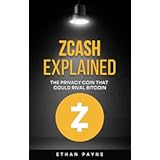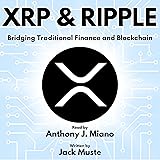Have you ever wished you had a crystal ball to peek into the future of the crypto market? The desire to accurately predict the peak of a bull run, knowing precisely when to take profits, is a common dream for many investors. While no one possesses such a magical device, advancements in artificial intelligence are beginning to offer incredibly detailed insights, attempting to model the complex dynamics of the crypto space. In the accompanying video, Grok AI, specifically its advanced “Grok Heavy” model, provides its updated predictions for the 2025 crypto market top, encompassing Bitcoin, Ethereum, and the broader altcoin market.
This sophisticated AI model, which comes with a substantial monthly subscription, processes an immense amount of data. It is fed historical market data, intricate on-chain analytics, prevailing macroeconomic trends, and even sentiment analysis. The objective is to produce highly refined market peak predictions, complete with reasoning and potential influencing factors. Let us delve into Grok AI’s latest pronouncements and compare them with its previous forecasts, exploring the shifts and the rationale behind them.
Grok AI’s Updated Bitcoin (BTC) Price Prediction
A month prior, Grok AI had projected Bitcoin to reach its peak around October 15th, at a price of $145,000. However, its most recent analysis, performed after nearly four minutes of intensive processing, suggests a notable shift. The updated **Grok AI crypto market top prediction** for Bitcoin now places the peak on November 18, 2025, with a target price of $165,000. This indicates an extension of the timeline by approximately one month and an increase in the projected price by $20,000.
The reasoning behind these adjustments is multi-faceted, drawing upon several key indicators. Historical Bitcoin cycles are observed to show peaks approximately 12-18 months post-halving events. Previous cycles in 2013, 2017, and 2021 consistently demonstrated this November-December timing for market tops. The April 2024 halving, therefore, naturally positions the next peak in late 2025, aligning with the current momentum where BTC has reportedly reached a new all-time high of ~$125,500 and trades at $121,803.
Driving Factors Behind Bitcoin’s Predicted Ascent
Several critical elements are believed to be contributing to Bitcoin’s potential future performance:
- On-Chain Metrics: Data from platforms like Glassnode is being used to indicate bullish resets. For instance, the MVRV ratio (Market Value to Realized Value) is understood to have bounced from long-term averages, suggesting that the market is undervalued relative to its historical trends. Furthermore, an impressive 87.3% of the supply is said to be in profit, and the short-term holder cost basis, currently around $92,900, has reportedly been defended. These metrics collectively signal a phase of strong accumulation among investors.
- ETF Flows: The emergence and rapid growth of Bitcoin spot ETFs have been a significant game-changer. These investment vehicles are experiencing explosive inflows, with $4.35 billion net inflows reportedly occurring in early October 2025 (e.g., $1.21 billion on October 6th in a predicted scenario). Such flows, representing 6.79% of Bitcoin’s market cap, are understood to drive substantial spot demand. The success of funds like BlackRock’s iShares Bitcoin ETF, which is already generating $244 million in annual revenue despite being only a year old, underscores the immense institutional appetite for Bitcoin exposure.
- Macroeconomic Conditions: The broader economic landscape is also considered supportive. Predicted US GDP growth of 3.8% in Q3 2025, coupled with projected Fed rate cuts initiated in September 2025 amid cooling inflation (core PCE at ~2.8%), creates a favorable environment for risk assets like Bitcoin. A projected 3.0% GDP for 2025 further strengthens this outlook.
- Sentiment and Dominance: Current market sentiment is classified as “greed” (index 70), with high trading volumes and Bitcoin dominance at 56.9%. This suggests that capital is flowing into Bitcoin as a perceived safe-haven asset within the crypto market.
- Cycle Multiples: Historically, post-halving periods have seen significant price appreciation. The 2020 halving, for example, preceded an approximate 10x surge from the market trough. While the current cycle is already up 2x from the halving price (~$64,000), Grok AI suggests there is still room for a 3-4x increase from recent lows, albeit moderated by the market’s increasing maturity.
Factors Influencing Bitcoin’s Peak: Sooner, Later, Higher, or Lower?
Grok AI also outlines conditions that could alter its base prediction:
- Sooner Peak: An acceleration of ETF inflows (exceeding $5 billion/week), positive regulatory news such as clearer US crypto policies (e.g., the Clarity Act), or stronger macroeconomic data leading to deeper Fed rate cuts could all pull the peak forward.
- Delayed Peak: Sudden and significant ETF outflows (e.g., over $1 billion/day due to profit-taking), rising geopolitical tensions leading to increased risk aversion, or renewed inflation spikes delaying rate cuts could postpone the market top.
- Higher Peak Price: Increased institutional adoption, including purchases by sovereign funds, a synergistic relationship between AI and Bitcoin boosting hash rate and utility, or halving scarcity being amplified by a low circulating supply (currently 19.93M BTC) could drive prices higher.
- Lower Peak Price: Regulatory crackdowns (e.g., stricter SEC rules), broader macroeconomic downturns like a recession, or extensive on-chain sell-offs where long-term holders distribute more than 5% of the supply could result in a lower market top.
Grok Heavy assigns a 55% probability for the Bitcoin peak to occur in November 2025, with a 70% chance of it happening within plus or minus 10 days of that date (October 20th to December 10th). For the price range, there is a 25% chance of an overshoot by 20% and a 10% chance of an undershoot by 20%, placing the likely range between $150,000 and $180,000.
Ethereum (ETH) Market Top Outlook
For Ethereum, Grok AI’s prior prediction was for a peak on October 20th, 2025, at $5,800. The updated prediction offers a more bullish perspective, shifting the peak to December 22nd, 2025, with a price target of $7,200. This extends the timeline by approximately two months and raises the price projection by $1,400. This indicates an expectation of significant growth for Ethereum.
Key Drivers for Ethereum’s Predicted Peak
Ethereum’s trajectory is primarily influenced by its correlation with Bitcoin, typically around 0.8, but it often lags by 6-12 months in its market peaks, a pattern observed in the 2017-2018 and 2021 cycles. Other factors contributing to this outlook include:
- On-Chain Health: On-chain data is being interpreted as showing a potential rebound for Ethereum, suggesting renewed investor interest and network activity.
- ETF Developments: Ethereum ETF flows have reportedly turned positive, with BlackRock once again leading the charge, mirroring the institutional interest seen in Bitcoin.
- Ecosystem Upgrades and Staking: Ongoing ecosystem upgrades (such as “Fusaka” and broader scaling solutions) and the increasing demand for staking ETH are expected to tighten the circulating supply, creating upward price pressure.
- Sentiment and Rotation: Sentiment remains at “greed” (index 70), and a rising ETH/BTC ratio from recent lows is being interpreted as a signal of capital rotating from Bitcoin into Ethereum.
- Historical Context: In the 2021 cycle, ETH reached $4,891 after Bitcoin’s peak. The current cycle projections suggest a 1.5-2x increase from recent highs, moderated by its lower dominance (12.6%) but supported by robust DeFi and DEX volumes (reportedly $139 billion in August).
Potential Influences on Ethereum’s Peak
The timing and price of Ethereum’s peak could also be influenced by:
- Sooner Peak: A surge in ETF inflows, major network upgrades that enhance scalability or utility, or policy easing in significant markets like China could accelerate the peak.
- Delayed Peak: A prolonged Bitcoin dominance spike pulling capital away from altcoins, network congestion caused by exceptionally high transaction volumes, or broader macroeconomic volatility could cause delays.
- Higher Peak Price: Explosive growth in decentralized finance (DeFi) and the NFT sector, a stronger correlation with Bitcoin during an uptrend, or a significant surge in institutional staking could drive the price higher.
- Lower Peak Price: Regulatory hurdles, particularly if the SEC were to classify ETH as a security, increased competition from other Layer 1 blockchains like Solana, or a global macroeconomic slowdown such as a recession could result in a lower market top.
Grok Heavy gives a 50% chance for ETH to hit its peak in December 2025, with a 65% chance within plus or minus 15 days (mid-November to mid-January). The price range of $6,000-$8,000 is given a 60% probability, with a 20% chance of overshooting or undershooting this range by 20%.
Altcoin Market (Total 3) Peak Prediction
The altcoin market, which encompasses all cryptocurrencies excluding Bitcoin and Ethereum, has also seen a significant adjustment in Grok AI’s forecast. Previously, the AI model predicted a peak around November 5th at a market capitalization of $2.1 trillion. The latest **Grok AI crypto market top prediction** is even more bullish, pushing the peak to January 15, 2026, with a massive market cap of $3.2 trillion. This implies an additional two months for the altcoin cycle and an astounding $1.1 trillion increase in the projected market capitalization.
Factors Propelling the Altcoin Surge
The primary reasoning for this heightened optimism in altcoins stems from historical market behavior and current trends:
- Capital Rotation and “Altseason”: Altcoins historically peak after Bitcoin and Ethereum, as capital rotates from the larger, more established assets into smaller, higher-risk projects during what is known as “altseason.” The current market cap for this segment, reportedly around $1.295 trillion (or $1.14 trillion according to some estimates), is seen as having significant room for growth, targeting a very wide range of $1.46-$4.37 trillion.
- Consolidation and Explosion: Historically, the altcoin market has shown phases of consolidation before exploding in later stages of bull cycles.
- Sentiment and Declining Bitcoin Dominance: A “greed” sentiment (index 70), rising DEX volumes, and a declining Bitcoin dominance (currently 56.9%) are key signals. A decrease in Bitcoin dominance often precedes a strong altcoin rally as investor focus shifts.
- Indirect ETF Boost and Macro Conditions: While altcoins do not have direct ETFs, the strong performance and inflows into Bitcoin and Ethereum ETFs can indirectly spill over into the broader altcoin market. Favorable macroeconomic conditions, such as rate cuts and GDP growth, also enable a “risk-on” environment where investors are more willing to venture into riskier assets.
- Projections Based on Past Cycles: Projections suggest a 2-3x increase from current pricing, drawing parallels with the 2021 cycle, which saw over $1 trillion in market capitalization consolidation.
Influences on Altcoin Market Cap: Sooner, Later, Higher, or Lower?
Variations from the base altcoin prediction could be caused by:
- Sooner Peak: A rapid Bitcoin top triggering an earlier rotation of capital into altcoins, the emergence of viral projects (e.g., AI coins, meme coins), or deeper rate cuts boosting overall market liquidity could bring the altcoin peak forward.
- Delayed Peak: A prolonged Bitcoin rally that maintains high Bitcoin dominance, regulatory sweeps on altcoins, or a global economic slowdown could delay the altcoin market peak.
- Higher Market Cap: An intense “altseason” driven by a significant decline in Bitcoin dominance, the emergence of new, compelling narratives (like real-world assets or AI/crypto synergy), or a robust macroeconomic recovery could lead to a higher market cap.
- Lower Market Cap: Increased risk aversion stemming from market crashes, periods of low liquidity across exchanges, or macroeconomic headwinds such as reaccelerating inflation could result in a lower peak.
Grok Heavy’s probabilities for the altcoin market top indicate a 45% chance of the peak occurring in January 2026, with a 60% chance of it falling within plus or minus 20 days (mid-December to mid-February). Historically, altcoins are observed to peak after Bitcoin and Ethereum, a pattern that Grok AI’s data is heavily drawing from for these updated **Grok AI crypto market top prediction** models.







